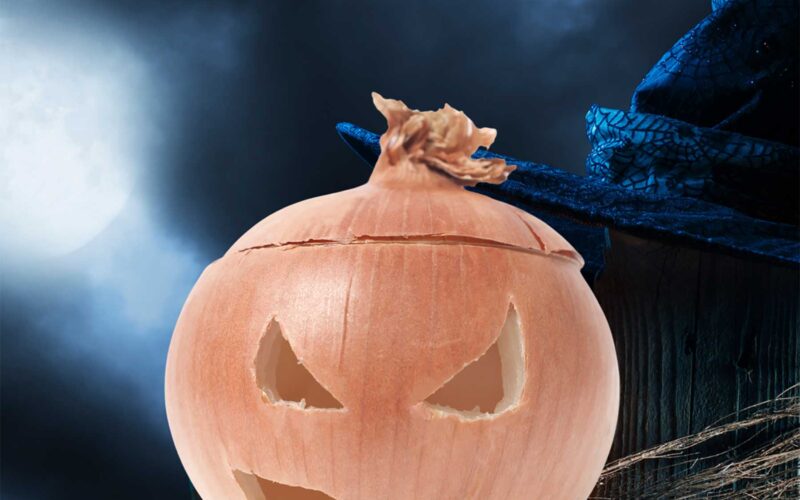From online school to virtual grocery shopping, the past few years have been unconventional to say the least. As Halloween approaches, many pumpkin patches may have restrictions due to new COVID-19 variants. Why not celebrate with a new, unconventional family tradition?
Carving pumpkins is fine, but have you ever carved an onion? Or a pineapple? This year, instead of digging your hands into the usual orange slop, create a festive smorgasbord of produce that you can put on display and turn into dinner later.
We’ve looked into the history of fruit and vegetable carving and found some awesome traditions to make our own this spooky season.
The Original Carved Turnip
One of the earliest origins of pumpkin carving stems from an old Irish tradition of carving turnips. Legend has it that a man named Stingy Jack (or Jack O’Lantern) made a deal with the devil and was cursed to roam the earth forever, using a hollowed out turnip and a burning coal to light his way. In homage to Jack O’Lantern, people began carving their own turnips and placing lights inside.
When Irish immigrants discovered the popularity of pumpkins in the United States and saw how easy they were to carve, the tradition evolved into what we now know as carving Jack-o-Lanterns.
Summon Stingy Jack by carving a turnip, rather than a pumpkin this Halloween, by following these simple steps:
- Select a turnip with a large enough surface area for a face, and draw a rough outline of your design.
- Cut off the top of the turnip and set it aside—this will act as your lid later.
- Score the inside of the turnip with a sharp knife, breaking up the root.
- Scoop out the insides with a carving hook, melon baller, or spoon, leaving a ¼-inch thick border.
- Use a precision craft knife to cut out the outline of your design.
- Place an LED light or tea candle inside, top with lid, and watch your turnip come to life.
At Gills Onions, we love finding new and exciting uses for fresh produce – especially onions. Use this carving method to carve an onion (or other produce like radishes, beets, pineapples, or oranges) and share your spooky creations with us on Instagram, Twitter, or Facebook.
Fruit Carving Fit for a King
Another rich tradition of fruit and vegetable carving comes from Thailand. Thai fruit carving is an ancient skill that was once reserved for royalty, but has since been adopted by food artists around the world. This method focuses on carving fresh produce like cantaloupe, watermelon, papaya, cucumber, and carrots from the outer skin, in order to create a pattern on the food itself.
You may not be able to carve an intricate design fit for a king or queen into your produce, but you can definitely create some Halloween-themed art that will wow your friends on social media. Here are some ideas for how to get started:
- Select your fruits/vegetables. To avoid excess waste, try to pick foods you’ll want to eat later on.
- Start by removing the outer rind by shaving your produce with a clay loop ribbon tool or vegetable peeler. (Pottery sculpting tools work great for carving produce and can be found easily online).
- Continue gradually shaving away at the surface until you’ve created your desired look.
This method takes a lot of practice, so don’t get discouraged if your first attempt looks messy.
There are so many great options for carving unconventional fruits and veggies this Halloween season (of course, we’re partial to onions), but however you decide to celebrate, be sure to have fun and stay safe.
Ready to try onions the Gills Way? For more information, contact the Gills Onions sales department.

